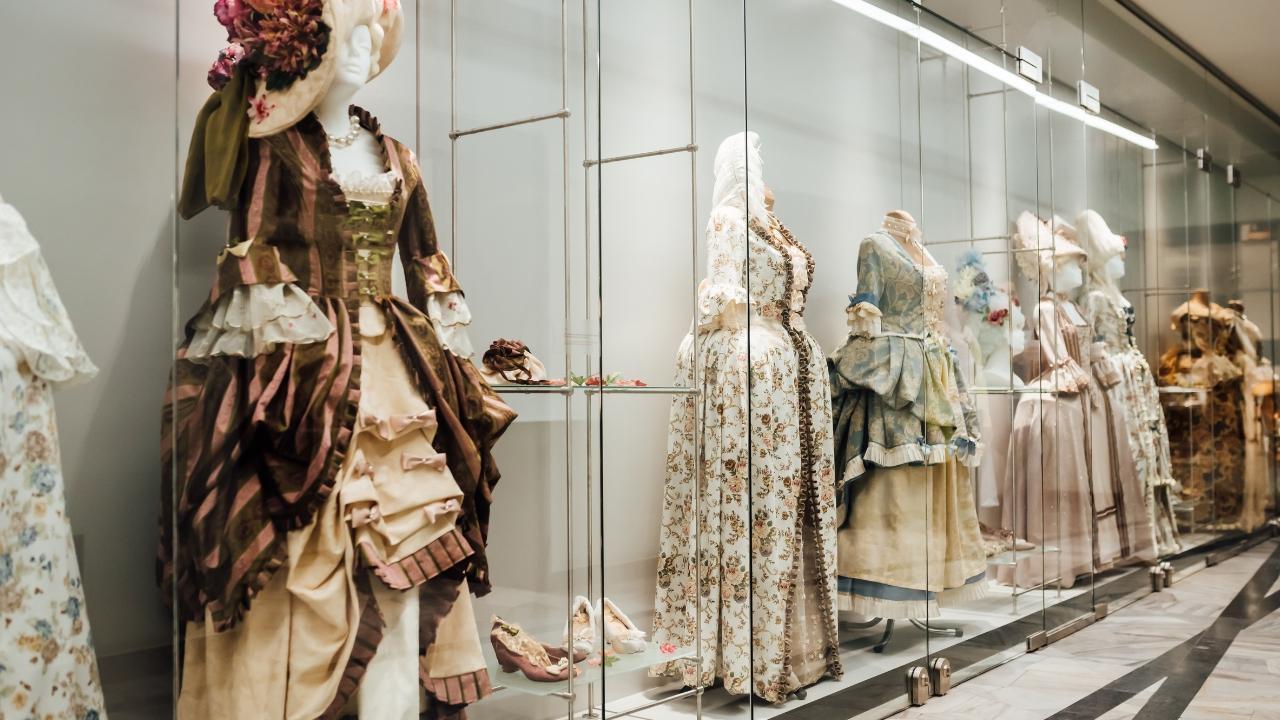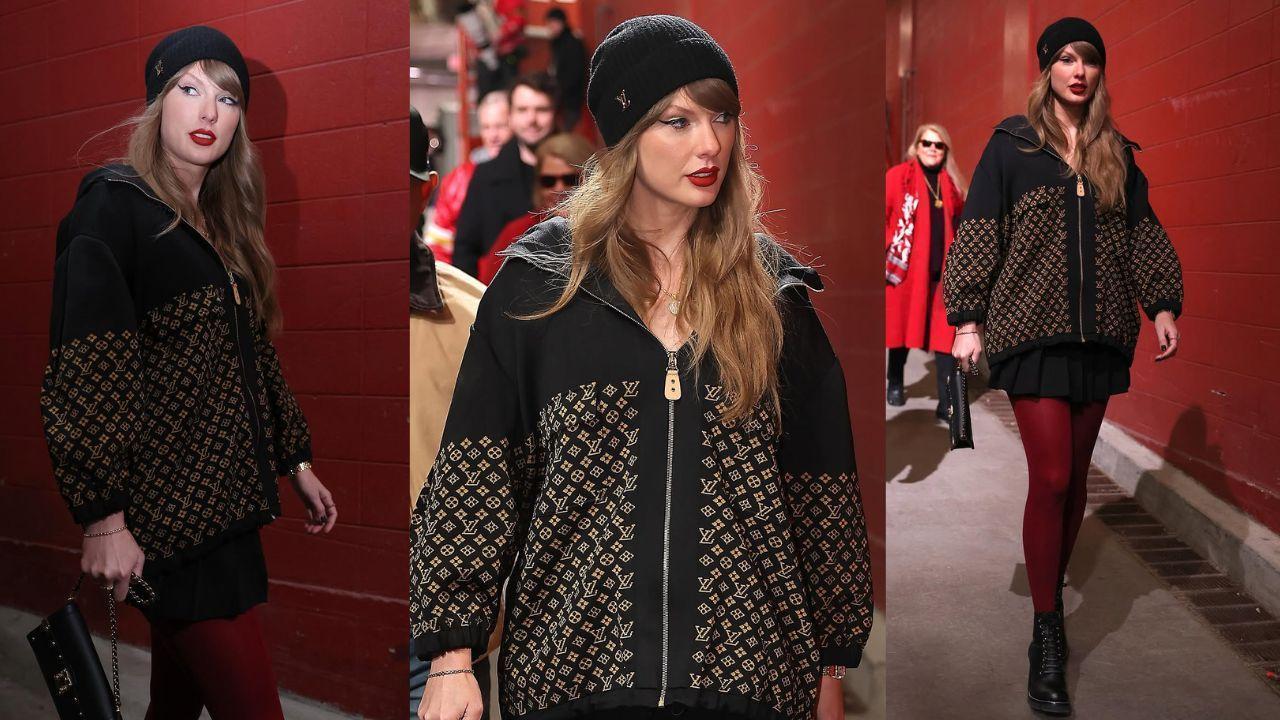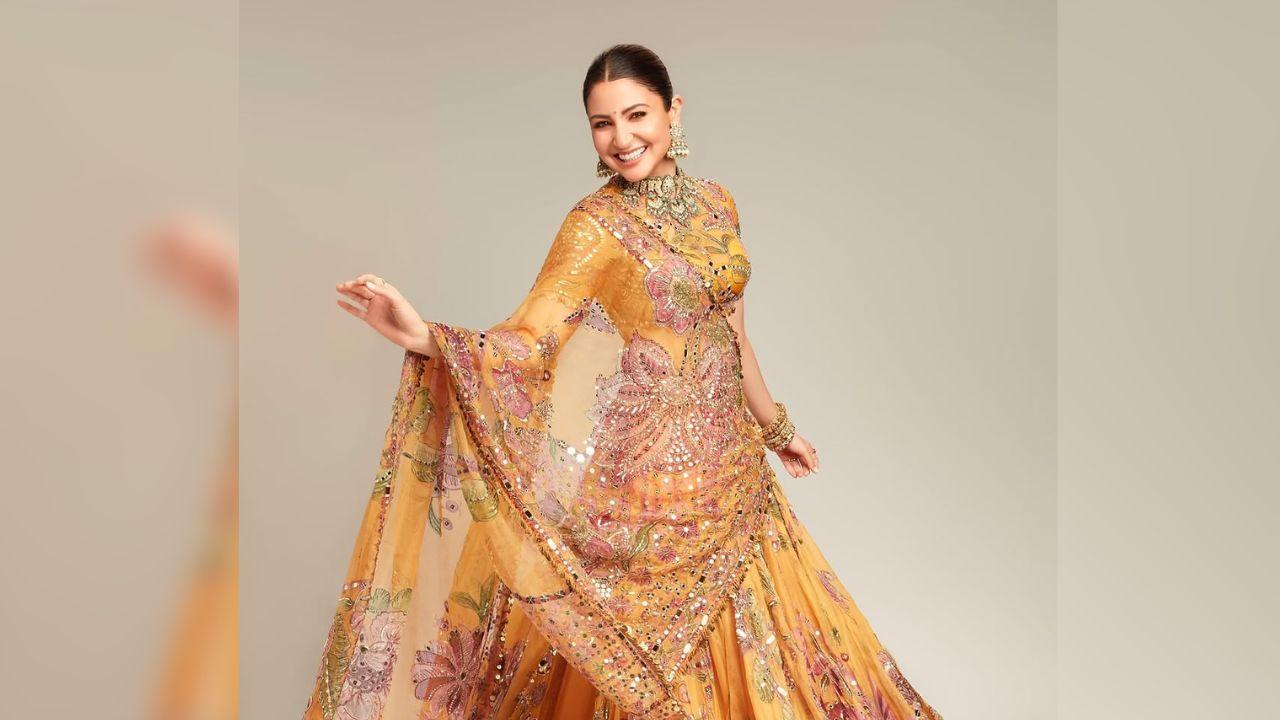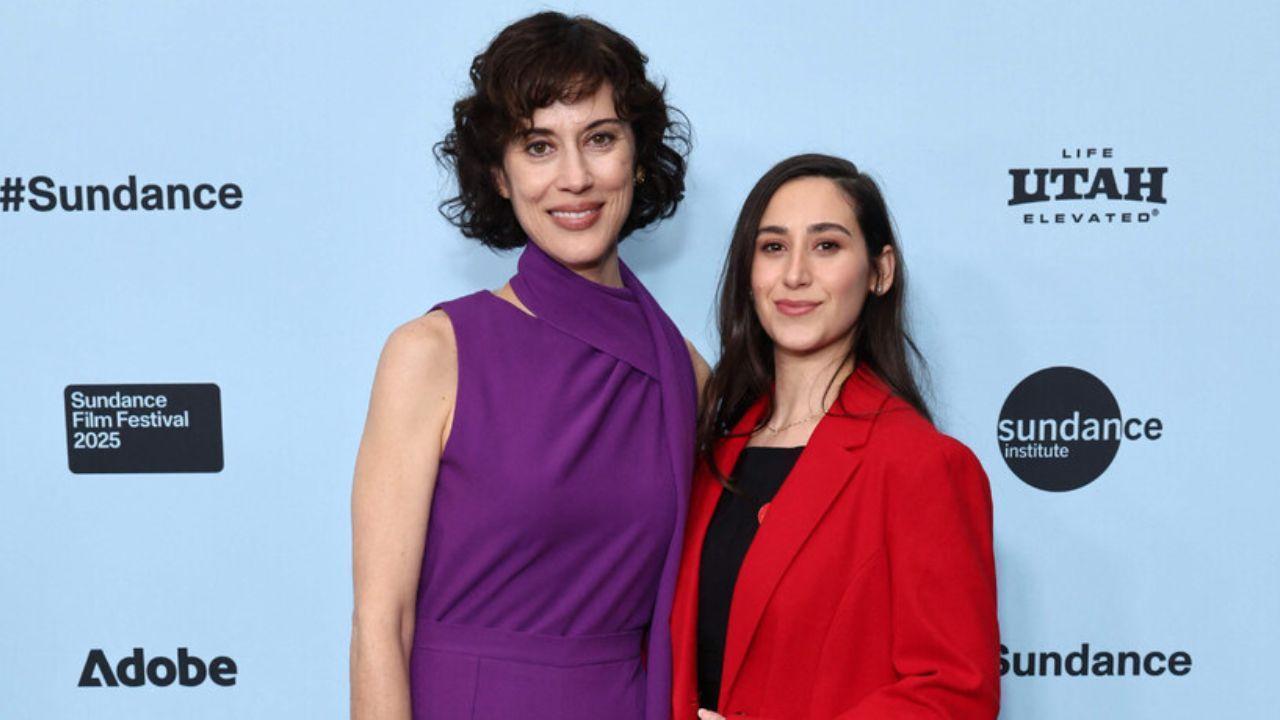
Fashion Through the Ages: A Journey from Ancient Civilizations to the 21st Century
Fashion, like a vibrant thread woven into the fabric of time, tells the tale of humanity's journey through the ages. It's more than just clothing; it's a mirror reflecting the values, cultures, and innovations of every era. Picture the grandeur of ancient civilizations with their regal robes and intricate adornments, symbolizing power and prestige. From the majestic pyramids of Egypt to the bustling streets of Rome, fashion whispered stories of opulence and sophistication.
As civilizations rose and fell, so did the tides of fashion. The medieval period unfolded with its tapestry of rich fabrics, intricate embroidery, and ornate accessories. Picture knights in shining armor and noble ladies draped in velvets and silks, each garment a reflection of status and lineage. Fashion wasn't merely a matter of personal preference; it was a language spoken by the elite, communicating wealth, power, and social standing.
Then came the Renaissance, a period of rebirth and revival. In the heart of Italy, artists and scholars sparked a cultural revolution that echoed in every stitch and seam. Fashion became an art form, with sumptuous fabrics, elaborate lace, and sculpted silhouettes celebrating the beauty of the human form. From the opulent courts of Florence to the bustling markets of Venice, clothing became a canvas for self-expression and individuality.
But as the world turned towards enlightenment, fashion followed suit. The Age of Reason brought with it a newfound appreciation for simplicity and functionality. Gone were the elaborate gowns and towering wigs of the past, replaced by clean lines and understated elegance. Fashion became a reflection of intellect and rationality, with garments designed for comfort and practicality.
Then came the Industrial Revolution, a tidal wave of change that swept across the globe. With the advent of mass production, fashion became accessible to the masses. No longer reserved for the elite, stylish garments filled the racks of department stores and boutiques. From the bustling streets of London to the boulevards of Paris, fashion became a democratic pursuit, accessible to all who dared to dream.
And so, the 20th century dawned with promise and possibility. From the flapper dresses of the Roaring Twenties to the bold prints of the Swinging Sixties, each decade brought its own distinctive style. Fashion became a reflection of society, echoing the social, cultural, and political movements of the time. From the trenches of World War II to the runways of Paris, clothing told stories of resilience, rebellion, and revolution.
Now, as we stand on the cusp of a new millennium, fashion continues to evolve and adapt. In the digital age, boundaries blur and cultures collide, giving rise to a global tapestry of styles and influences. From the streets of Tokyo to the catwalks of New York, fashion is a language spoken by all, transcending borders and barriers.
So let us embark on this journey through time, exploring the captivating story of fashion through the ages. From the dawn of civilization to the modern age, let us celebrate the creativity, diversity, and resilience of the human spirit, as reflected in the ever-changing world of fashion.
Ancient Civilizations:
Picture the ancient sands of Egypt, where pharaohs and queens draped themselves in garments fit for the gods. The Egyptians, with their awe-inspiring pyramids and majestic Nile, didn't just build wonders; they adorned themselves in wonders too. Their clothing wasn't merely fabric; it was a canvas of status and spirituality.
Luxurious fabrics, woven with threads of gold and silver, whispered tales of wealth and power. Intricate jewelry adorned every inch of their bodies, sparkling like stars in the desert night. For the Egyptians, fashion wasn't just about looking good; it was about embodying divine connections and asserting dominance over mortal realms.
Meanwhile, across the fertile lands of Mesopotamia, another civilization thrived. The Mesopotamians were masters of textile production, spinning wool and linen into works of art. Their garments weren't just clothes; they were testaments to their ingenuity and craftsmanship.
Imagine walking through the bustling streets of ancient Babylon, where merchants traded bolts of fabric like precious gems. Every thread was woven with care, every stitch a testament to their mastery of the loom. For the Mesopotamians, fashion wasn't just about wearing clothes; it was about showcasing their skills and sophistication to the world.
And then there were the Greeks, with their olive groves and azure seas, celebrating the beauty of the human form in all its glory. Draped in garments like the chiton and peplos, they embodied ideals of grace and elegance. Their clothing wasn't just fabric; it was a reflection of their reverence for the gods and their appreciation for the natural world.
Picture a gathering of Greek philosophers, their flowing robes billowing in the breeze as they pondered the mysteries of the universe. To them, fashion wasn't just about following trends; it was about expressing their beliefs and philosophies through the language of clothing.
In the cradle of civilization, fashion wasn't just a frivolous pursuit; it was a reflection of values, beliefs, and aspirations. From the opulent garments of the Egyptians to the masterful creations of the Mesopotamians and the graceful drapes of the Greeks, ancient fashion spoke volumes about the societies that crafted it. It was a language that transcended words, a tapestry woven with threads of history and culture.
Medieval Splendor:
During the Medieval period, fashion wasn't just about clothing; it was a grand spectacle of wealth, power, and craftsmanship. Picture European nobility strolling through castles and courts adorned in extravagant garments that seemed to sparkle with opulence. These weren't just clothes; they were statements, carefully crafted to announce one's status and importance to the world.
The fabrics themselves were a testament to luxury. Nobles draped themselves in sumptuous silks, velvets, and brocades, each thread woven with care and precision. These materials weren't just expensive; they were works of art in their own right, displaying intricate patterns and rich colors that caught the eye and dazzled the beholder.
But it wasn't just about the fabrics. The garments themselves were masterpieces of design and tailoring. Skilled artisans spent countless hours creating elaborate gowns, tunics, and doublets adorned with intricate embroidery, delicate lace, and gleaming jewels. Every stitch was placed with care, every seam meticulously crafted to ensure the perfect fit.
And then there were the accessories. No noble outfit was complete without an array of decorative accouterments. Gold chains, bejeweled belts, and ornate headdresses adorned with feathers and pearls added the finishing touches to an ensemble that screamed extravagance.
But amidst all this splendor, there was also a darker side to Medieval fashion. Sumptuary laws, enacted by rulers to regulate what people could wear based on their social status, reinforced the rigid hierarchy of feudal society. These laws dictated everything from the type of fabric peasants could use to the style of clothing nobles were allowed to wear, further emphasizing the gap between the haves and the have-nots.
In essence, Medieval fashion was more than just a means of covering the body; it was a language of power, wealth, and social standing. It was a visual display of status, carefully orchestrated to command respect and admiration. And while the garments may have changed over the centuries, the underlying desire to use fashion as a tool for self-expression and societal positioning remains as strong today as it was in the Middle Ages.
Renaissance Revival:
During the Renaissance, which means "rebirth," Europe experienced a resurgence of creativity and exploration. This period wasn't just about art and science; fashion also played a crucial role in reflecting these newfound ideas.
Imagine yourself in Renaissance Italy, where the streets are bustling with merchants selling exotic spices and textiles from distant lands. Among the aristocracy, fashion became a form of art, a way to showcase wealth and status. Italian nobles spared no expense when it came to clothing themselves in the finest fabrics, often embellished with intricate lace and embroidery.
One of the most iconic fashion statements of the Renaissance was the ruff – a wide, frilled collar that encircled the neck and framed the face. These elaborate ruffs were a symbol of prestige and sophistication, often worn by both men and women.
But it wasn't just the nobility who influenced Renaissance fashion. The rise of the merchant class meant that more people had access to luxurious fabrics and stylish garments. As a result, fashion became a means of social mobility – a way for individuals to elevate their status and express their personalities.
Picture the streets of Florence or Venice, where merchants and artisans proudly displayed their wealth through their attire. From sumptuous silks to intricate brocades, Renaissance fashion was a feast for the eyes, reflecting the opulence and creativity of the era.
But beyond the lavish fabrics and ornate embellishments, Renaissance fashion was also a reflection of changing attitudes towards self-expression. Clothing became a form of personal identity, with individuals using fashion to convey their profession, social standing, and even their innermost desires.
In essence, the Renaissance was not just a rebirth of art and culture; it was also a rebirth of fashion – a time when clothing became more than just a necessity, but a statement of identity and aspiration.
Age of Enlightenment:
During the Age of Enlightenment, people were all about embracing logic and rationality. This mindset seeped into fashion too. Gone were the days of over-the-top extravagance. Instead, folks started opting for clothes that were simple yet classy, and most importantly, practical.
Picture this: you're strolling through the streets of Paris during the 18th century. What do you see? Women donning flowing dresses with high-waisted designs, inspired by the elegance of ancient Greek and Roman fashion. These garments were all about gracefulness and ease of movement, reflecting the newfound appreciation for simplicity and functionality.
But the real game-changer came with the French Revolution. As the revolutionaries stormed the Bastille and toppled the monarchy, they also flipped the script on fashion. Out went the elaborate court attire favored by the aristocracy. Instead, people started dressing in more practical clothing that suited their everyday lives.
No longer was fashion solely reserved for the elite. The rise of the bourgeoisie meant that everyday folks wanted clothes that were comfortable and suited their daily activities. This shift in attitude towards clothing mirrored the broader societal changes taking place during the French Revolution.
In essence, the Age of Enlightenment wasn't just about embracing reason—it was also about reimagining every aspect of society, including fashion. By simplifying and making clothing more functional, people were able to express their newfound ideals of equality and rationality in the way they dressed.
Industrial Revolution:
During the Industrial Revolution, which kicked off in the late 18th century, fashion underwent a monumental transformation that reshaped the way people dressed and perceived clothing. This era marked a significant departure from traditional artisanal methods of production towards mechanized processes, catapulting fashion into a new era of accessibility and innovation.
Mass production was the cornerstone of this revolution. With the introduction of mechanized looms and sewing machines, textiles could be produced at a much faster rate and in larger quantities than ever before. This resulted in a surplus of affordable fabrics, making stylish garments accessible to a broader segment of society beyond just the wealthy elite.
One of the key consequences of mass production was the rise of ready-to-wear clothing. Instead of relying solely on bespoke garments crafted by skilled tailors, individuals could now purchase pre-made clothing off the rack from department stores. This shift democratized fashion, allowing people from all socioeconomic backgrounds to follow the latest trends and express themselves through their clothing choices.
Moreover, innovations in textile manufacturing paved the way for a greater variety of fabrics and designs. Synthetic fibers such as rayon and nylon were developed, offering alternatives to natural materials like cotton and wool. This diversification of materials fueled creativity in fashion design, leading to a proliferation of styles and aesthetics.
Alongside the rise of mass-produced clothing, the emergence of fashion magazines played a pivotal role in shaping consumer tastes and trends. Magazines like Vogue and Harper's Bazaar showcased the latest designs from renowned couturiers, influencing what people aspired to wear. Fashion became not just a necessity but a form of cultural expression and identity.
Department stores also played a crucial role in democratizing fashion. These retail giants offered a wide selection of clothing at various price points, catering to diverse tastes and budgets. They became hubs of social activity, where people could browse the latest fashions, seek style advice, and socialize with others.
Overall, the Industrial Revolution revolutionized the fashion industry by making stylish clothing more accessible, diverse, and inclusive. It marked a shift towards mass production, ready-to-wear clothing, and consumer culture that continues to shape the way we dress and perceive fashion today.
20th Century Modernism:
The 20th century was a rollercoaster ride for fashion, with each decade leaving its distinct mark on the sartorial landscape. Let's take a closer look at how the trends evolved over the years:
1. Roaring Twenties (1920s):
The Jazz Age burst onto the scene with a bang, bringing with it a revolution in fashion. Women ditched their corsets and embraced liberation with the iconic flapper style. Short skirts, bobbed haircuts, and beaded dresses became the epitome of chic, reflecting the newfound spirit of independence and defiance of societal norms.
2. Depression Era (1930s):
The Great Depression cast a shadow over the world, and fashion adapted to the economic hardships. Practicality ruled the day, with simple, streamlined silhouettes and muted colors dominating the scene. Despite the challenges, designers found ways to inject elegance into everyday attire, offering affordable yet stylish options for the masses.
3. World War II (1940s):
The outbreak of World War II brought about drastic changes in fashion as resources became scarce and priorities shifted. Rationing measures meant that clothing was rationed, leading to the rise of utility clothing made from durable, economical fabrics. Women embraced a more practical wardrobe, with tailored suits and A-line skirts becoming wartime staples.
4. Post-War Boom (1950s):
With the war finally over, the 1950s heralded a return to prosperity and optimism. Fashion exploded with glamour and extravagance, as Dior's "New Look" introduced full skirts, nipped waists, and luxurious fabrics. Women embraced a more feminine silhouette, epitomized by the hourglass figure. Meanwhile, youth culture began to assert itself with rebellious styles like denim jeans and leather jackets.
5. Swinging Sixties (1960s):
The 1960s brought about a cultural revolution, and fashion mirrored the era's spirit of rebellion and experimentation. The youth-driven counterculture rejected the conservative norms of the past, embracing bold colors, psychedelic prints, and mod-inspired designs. Mini skirts, go-go boots, and shift dresses became symbols of the Swinging Sixties, reflecting the newfound sense of freedom and individuality.
Each decade of the 20th century brought its own unique flavor to the world of fashion, influenced by the social, cultural, and political currents of the time. From the exuberance of the Roaring Twenties to the radicalism of the Swinging Sixties, each era left an indelible mark on the fashion landscape, shaping the way we dress and express ourselves to this day.
21st Century Fusion:
In today's world, fashion isn't just about clothes; it's a dynamic expression of identity, culture, and values. Thanks to the digital age, fashion has undergone a radical transformation, becoming a melting pot of influences from every corner of the globe.
Globalization has played a pivotal role in this transformation. With borders becoming increasingly porous, designers are no longer confined by geographical boundaries. Instead, they're drawing inspiration from diverse cultures and traditions, infusing their creations with a rich tapestry of colors, patterns, and textures. From the vibrant prints of African textiles to the intricate embroideries of Indian saris, the world is now a runway for creativity.
But it's not just about aesthetics; sustainability has become a driving force in the fashion industry. As awareness of environmental and social issues grows, consumers are demanding more ethical and eco-friendly clothing options. This has led to a surge in sustainable fashion initiatives, from upcycled materials to fair trade practices. Now, looking good doesn't have to come at the expense of the planet.
Technology, too, is revolutionizing the way we think about fashion. With advancements like 3D printing and virtual reality, designers are pushing the boundaries of creativity and innovation. Imagine being able to customize your own shoes with just a few clicks, or virtually try on outfits before making a purchase. The possibilities are endless, and the future of fashion is limited only by our imagination.
In this era of fusion, fashion is more than just what we wear; it's a reflection of who we are and what we stand for. It's a celebration of diversity, sustainability, and innovation. And as we continue to embrace the opportunities of the digital age, the world of fashion will only become more colorful, more inclusive, and more exciting than ever before.
Summary:
"Fashion Through the Ages: A Journey from Ancient Civilizations to the 21st Century" takes readers on a captivating exploration of the evolution of fashion across different epochs. Starting from the opulent garments of ancient civilizations, the article delves into the intricacies of medieval splendor, Renaissance revival, and the age of enlightenment. It further explores the impact of the industrial revolution and the modernist trends of the 20th century, before delving into the fusion of styles and influences in the 21st century. Through each era, fashion is portrayed as more than just clothing, but as a reflection of societal values, cultural shifts, and individual expression. The article celebrates the diversity, innovation, and sustainability that characterize contemporary fashion, while acknowledging the rich tapestry of influences that have shaped it throughout history.
Disclaimer:
At DXB News Network, we strive to provide informative and engaging content for our readers. However, it's important to note that the views and opinions expressed in articles published on our platform are those of the authors and do not necessarily reflect the official stance of DXB News Network. While we make every effort to ensure the accuracy and reliability of the information presented, readers are encouraged to conduct further research and exercise critical thinking when interpreting the content. We value transparency and integrity in journalism and remain committed to delivering high-quality, trustworthy content to our audience.
#FashionThroughTheAges #TimelessTrends #CulturalFusionFashion #SustainableStyle #InnovativeFashion #GlobalFashionTrends #breakingnews #worldnews #headlines #topstories #globalUpdate #dxbnewsnetwork #dxbnews #dxbdnn #dxbnewsnetworkdnn

Sheikh Dr. Sultan bin Mohammed Al Qasimi, Ruler of Sharjah, has issued an Emiri Decree to establish and organize the Sharjah Creative Quarter (SCQ)...Read More.

Ruling BJP and allies proposed 23 changes to the Waqf Amendment Bill, while the opposition suggested 44, but none were accepted...Read More.
 Taylor Swift Stuns in ₹4.5 Lakh Louis Vuitton Jacket at Travis Kelce's Match
Taylor Swift Stuns in ₹4.5 Lakh Louis Vuitton Jacket at Travis Kelce's Match
Taylor Swift's Louis Vuitton jacket stole the spotlight as she cheered for boyfriend Travis Kelce du
 Gulf Giants Secure Six-Wicket Victory Over Sharjah Warriorz
Gulf Giants Secure Six-Wicket Victory Over Sharjah Warriorz
Tom Alsop played a brilliant knock, scoring an unbeaten 85 to lead Gulf Giants to a stunning six-wic
 Dubai's Real Estate Market Stays Among the World’s Best: Hamdan bin Mohammed
Dubai's Real Estate Market Stays Among the World’s Best: Hamdan bin Mohammed
Dubai’s real estate sector sees AED761B in transactions and 2.78M procedures in 2024
 Tamer Ashour & Adam to Perform at Al Majaz Amphitheatre on February 15
Tamer Ashour & Adam to Perform at Al Majaz Amphitheatre on February 15
Tamer Ashour & Adam to perform at Al Majaz Amphitheatre on Feb 15, promising a captivating night
 Keys Stuns Sabalenka to Win First Grand Slam Title
Keys Stuns Sabalenka to Win First Grand Slam Title
Madison Keys defeated top seed Aryna Sabalenka 6-3, 2-6, 7-5 to win her first Grand Slam title at th
Sharjah Ruler Approves Creation of Sharjah Creative Quarter

Sheikh Dr. Sultan bin Mohammed Al Qasimi, Ruler of Sharjah, has issued an Emiri Decree to establish and organize the Sharjah Creative Quarter (SCQ)
2 Non-Muslim Members Among 14 Changes in Waqf Amendment Bill

Ruling BJP and allies proposed 23 changes to the Waqf Amendment Bill, while the opposition suggested 44, but none were accepted
Exploring Dubai's Art and Culture Beyond the Skyscrapers

Discover Dubai's vibrant art and culture beyond its famous skyline.
Drug Kingpin Arrested After Wife's Social Media Reveals Location

Rodriguez shared photos at landmarks like the Eiffel Tower and Trevi Fountain, attracting DEA agents monitoring the couple's online movements
Thousands Return to North Gaza for 1st Time Since War as Israel Opens Crossings

After news of open crossings, tens of thousands of Gazans started walking north on Monday morning, carrying their belongings
Taylor Swift Stuns in ₹4.5 Lakh Louis Vuitton Jacket at Travis Kelce's Match

Taylor Swift's Louis Vuitton jacket stole the spotlight as she cheered for boyfriend Travis Kelce during the AFC Championship game
Anushka Sharma Stuns in Yellow Lehenga Worth ₹1.6 Lakh

Anushka Sharma is radiating elegance in her yellow lehenga designed by Mahima Mahajan. The stunning outfit exudes royal charm and costs ₹1.6 lakh, leaving every
Palestinian Voices Shine at Sundance Film Festival 2025

Palestinian-American director Cherien Dabis, set to shoot her personal drama *All That’s Left Of You* in the West Bank, was forced to reconsider her plans after
Colombia Reverses Deportation Decision After Trump’s Threats

Colombia agrees to accept deported citizens after Trump's tariff threat on Sunday, reversing defiance to US plans
From Underdogs to Winners: Amazing Comebacks in Sports

Discover inspiring sports comebacks where underdogs triumphed
3001E, 30 Floor, Aspin Commercial Tower, Sheikh Zayed Road, Dubai, UAE
+971 52 602 2429
info@dxbnewsnetwork.com
© DNN. All Rights Reserved.